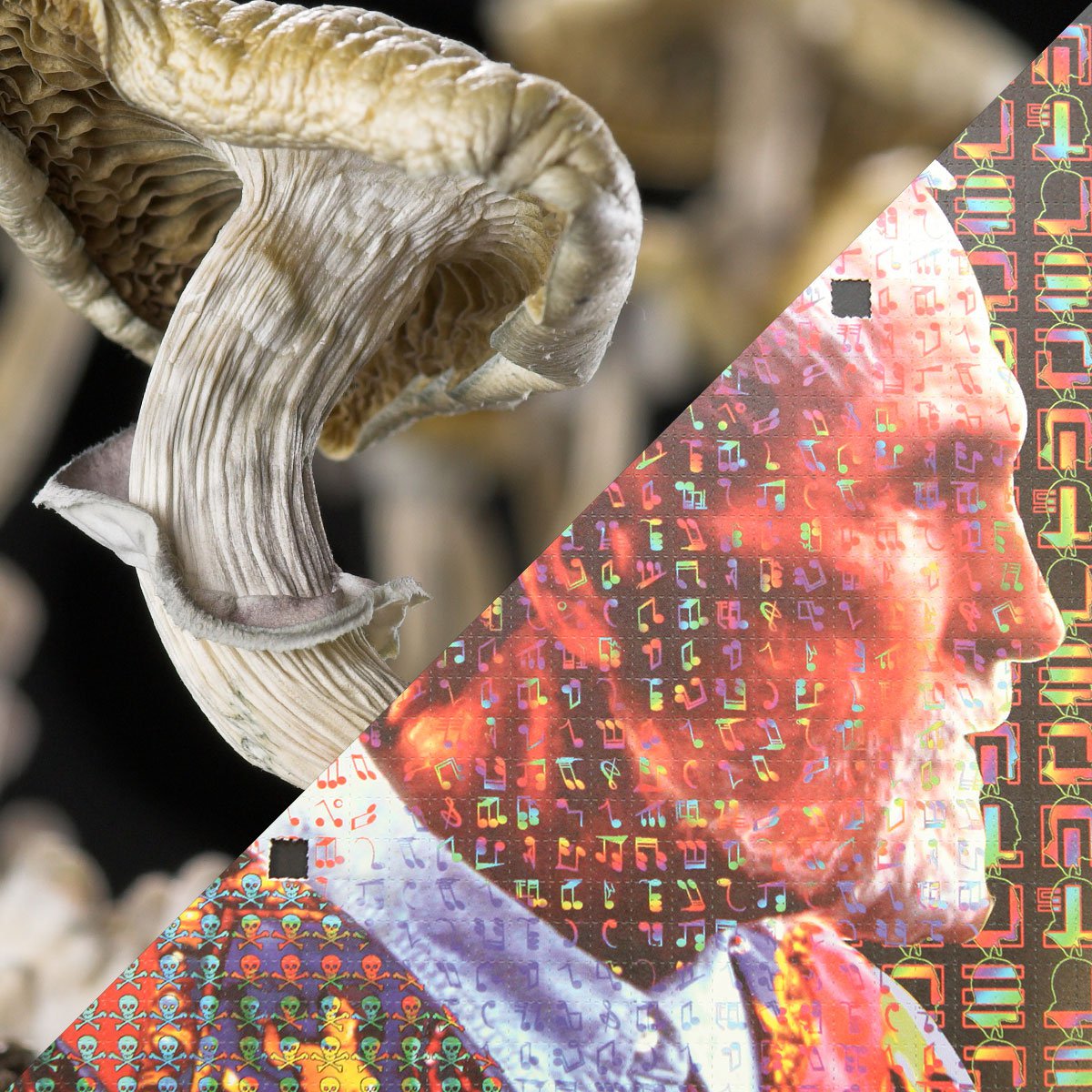Uncover the Benefits About Golden Psycho and Its Features.
Uncover the Benefits About Golden Psycho and Its Features.
Blog Article
Everything About Psychotomimetic Compounds: Their Function in Psychological Research
Psychotomimetic substances, such as LSD and psilocybin, have garnered raising interest in mental study for their capability to duplicate psychotic signs and symptoms and offer insight right into numerous mental wellness conditions. Their communications within the brain, specifically through serotonin and dopamine paths, recommend a complicated connection in between consciousness and neurobiology that might unlock novel healing methods. As scientists proceed to investigate their possible applications, ethical factors to consider surrounding their usage in scientific setups become extremely important, increasing critical concerns concerning safety and notified approval that require further expedition.
Definition of Psychotomimetic Substances
In the world of mental study, psychotomimetic compounds are compounds that can generate results appearing like those of psychosis, such as hallucinations, delusions, and modified understandings of truth - About Golden Psycho. These compounds can be categorized right into numerous classifications, consisting of hallucinogens, dissociatives, and certain energizers, each creating distinctive psychological effects
The pharmacological action of psychotomimetic compounds typically entails modulation of natural chemical systems, specifically those pertaining to serotonin, dopamine, and glutamate. For instance, substances like lysergic acid diethylamide (LSD) largely act upon serotonin receptors, causing profound modifications in sensory understanding and cognition.
The utility of psychotomimetics in study hinges on their ability to resemble psychotic signs, giving a model for understanding the underlying devices of psychotic disorders such as schizophrenia. By examining the impacts of these compounds, researchers can obtain understandings into the neurobiological and mental procedures that add to psychosis.
Furthermore, psychotomimetic substances have been explored for their therapeutic possibility in treating various mental health and wellness conditions, consisting of depression and anxiousness, highlighting their dual function in both research study and possible clinical applications.
Historical Growth and Context
The expedition of psychotomimetic compounds has an abundant historical context that dates back to old human beings, where compounds such as psilocybin mushrooms and peyote were used in spiritual and healing practices. These very early uses typically linked with religious rituals, suggesting an extensive respect for the transformed states of consciousness generated by these compounds.
The mid-20th century noted a significant turning point in the research study of psychotomimetic compounds, particularly with the synthesis of LSD by Albert Hofmann in 1938. The succeeding popularization of LSD in the 1960s catalyzed a wave of passion in both its emotional results and possible restorative applications. Scientists began to explore just how these compounds might simulate psychotic states, giving understandings into mental disease.
Nevertheless, the increasing association of psychotomimetics with counterculture movements brought about regulative reaction, finishing in the criminalization of most of these substances. Despite these obstacles, the revival of interest in the restorative possibility of psychedelics in the 21st century has triggered restored research study. This historic trajectory underscores the evolving assumption of psychotomimetic substances, changing from sacred compounds to topics of clinical questions and, possibly, therapeutic pledge.
Mechanisms of Action
Comprehending the devices of action of psychotomimetic compounds exposes the detailed ways these compounds interact with the mind's neurochemistry. These substances largely exert their effects with inflection of natural chemical systems, specifically serotonin, dopamine, and glutamate. For instance, many timeless psychedelics, such as psilocybin and LSD, mostly serve as agonists at serotonin 5-HT2A receptors, causing altered understanding and cognition. This interaction not only impacts sensory processing yet also improves emotional and reflective experiences.
Along with serotonin, dopaminergic paths are significantly affected by compounds like mescaline and specific cannabinoids, which can result in altered states of consciousness and changes in find out state of mind and inspiration. The NMDA receptor animosity observed with substances like ketamine highlights an additional pathway via which psychotomimetics may generate dissociative states and profound changes in thought processes.
The neurochemical waterfalls initiated by these interactions cause complicated and complex psychological effects. Recognizing these devices is essential for both the development of emotional study and the healing possibility of psychotomimetic compounds, as they offer understandings into the underlying neural correlates of transformed states of consciousness.
Current Study and Applications
Current examinations right into psychotomimetic compounds have actually exposed a revival of interest in their restorative applications, especially in the areas Our site of psychiatry and psychology. Scientists have begun discovering compounds such as psilocybin, LSD, and ayahuasca for their prospective to alleviate signs and symptoms associated with numerous psychological health conditions, including clinical depression, anxiousness, and PTSD.
Professional trials have demonstrated that, when carried out in controlled settings, these substances can help with profound psychological experiences, promoting psychological developments and improved therapeutic results. Studies have shown that psilocybin-assisted therapy can lead to substantial reductions in treatment-resistant anxiety, with results lasting for numerous months post-treatment.
Furthermore, psychotomimetic substances are being evaluated for their capacity to cultivate neuroplasticity, potentially permitting even more reliable rewiring of maladaptive idea patterns. These searchings for suggest that such compounds may act as adjuncts to typical psychotherapeutic techniques, improving the effectiveness of healing treatments.
As study advances, the emphasis is shifting in the direction of recognizing the ideal dosages, restorative settings, and individual attributes that can make the most of the benefits of these substances. This blossoming field holds assurance for reinventing mental wellness treatment standards and attending to the limitations of standard psychiatric medications.
Ethical Factors To Consider in Research Study

Browsing the ethical landscape of research involving psychotomimetic substances is essential to making sure participant safety and the integrity of study outcomes. Researchers should focus on informed approval, making certain that participants totally comprehend the potential threats and advantages related to the substances being examined. This consists of offering detailed details regarding feasible emotional effects, consisting of acute and lasting effects, and permitting participants the possibility to withdraw from the study at any moment without penalty.
In addition, ethical oversight by institutional evaluation boards (IRBs) is necessary. IRBs examine research study methods to secure individual welfare and promote ethical standards. This examination assists alleviate threats and ensures that researches are carried out with scientific roughness. In addition, the capacity for coercion must be carefully assessed, especially when vulnerable populaces are entailed.
Confidentiality is an additional vital consideration. Scientists must execute durable measures to shield individuals' identities and data, particularly offered the sensitive nature of experiences connected with psychotomimetic substances click now (About Golden Psycho). Ultimately, a dedication to moral practices not just promotes trust between scientists and participants but also improves the trustworthiness and validity of the study end results, adding to the development of mental understanding

Final Thought
Finally, psychotomimetic compounds, especially timeless psychedelics such as LSD and psilocybin, deal substantial understandings right into emotional problems via their unique systems of action. Their restorative capacity in resolving problems like anxiousness and PTSD emphasizes the relevance of continued research in this field. However, ensuring ethical requirements in research study techniques is essential for participant safety and informed consent, enabling a liable exploration of these compounds' benefits and implications within mental science.
Report this page